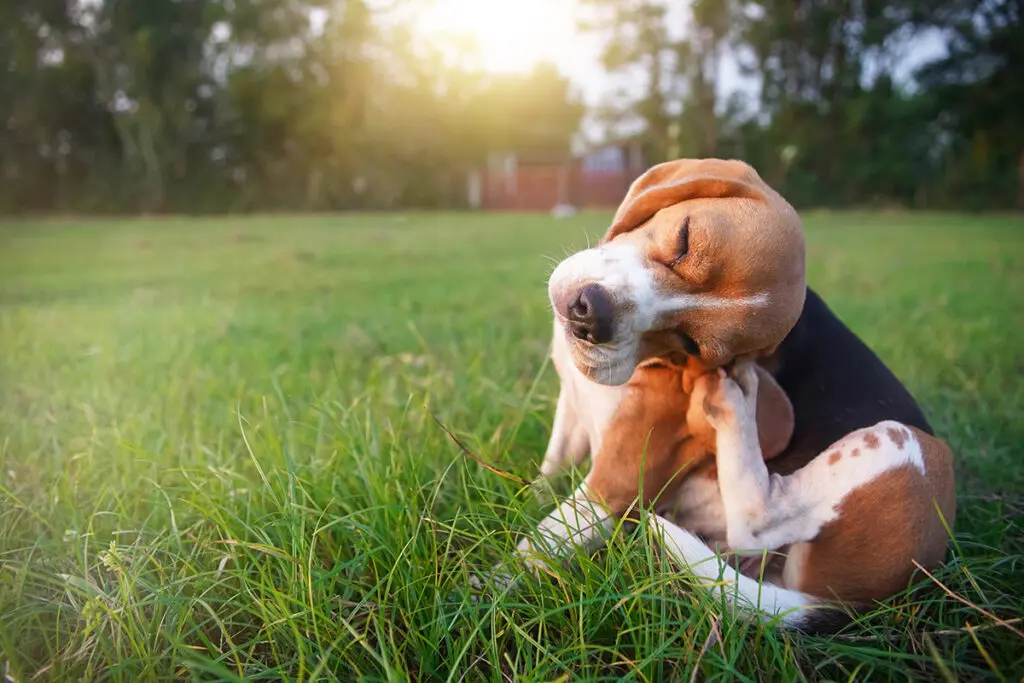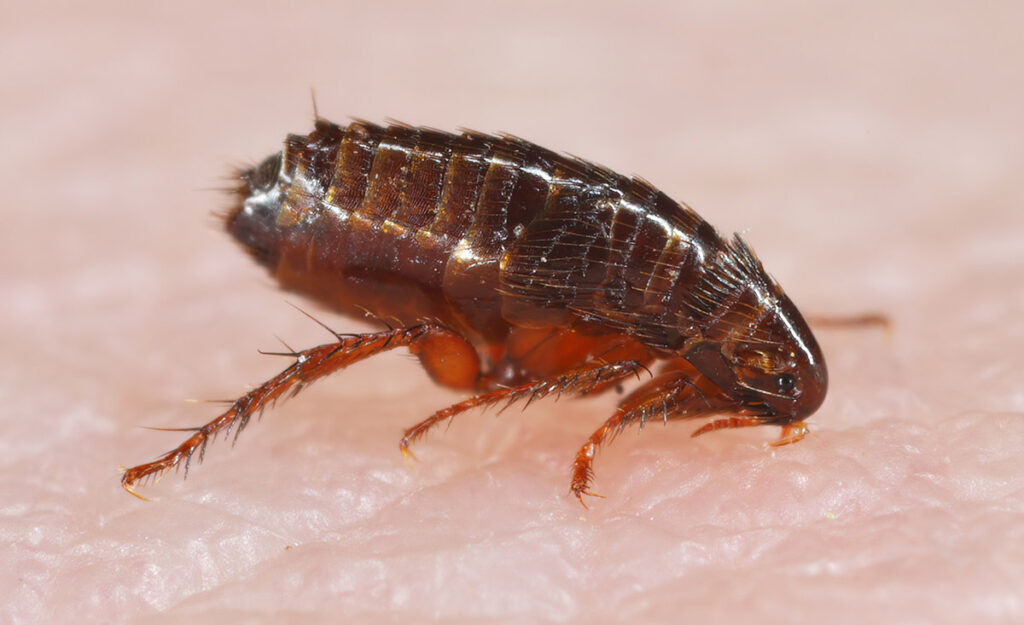
Fleas don’t just infest your pets; they can thrive in your yard, too. If your pets are scratching more than usual or you’ve noticed bites on your ankles, it’s time to treat your yard. This guide covers everything you need to know about how to get rid of fleas in your yard, including effective treatments and how JHL Turf Pros can help protect your lawn, pets, and family. Whether you’re dealing with a mild issue or a major flea infestation, knowing how to eliminate fleas in yard areas is the first step toward reclaiming your outdoor space.
How Fleas Survive in Your Yard
Fleas are resilient pests that can easily make a home in your yard. They thrive in moist, shaded environments like tall grass, leaf litter, trees and shrubs, and under decks—especially in areas where your pet spends time. Do fleas live in grass? Yes, and fleas can live there for weeks, multiplying rapidly, which is why it’s so important to act early.
Understanding the flea life cycle is key to effective flea control. Fleas lay eggs that hatch into flea larvae, which feed on organic debris before becoming pupae. Adult fleas emerge when conditions are right, often triggered by vibrations from a passing host. Since they can live in various stages, missing just one part of the cycle can lead to reinfestation.
Outdoor flea problems often start subtly but can escalate quickly. If you’re wondering how to kill fleas in yard environments and stop them from spreading, early and comprehensive action is crucial.

Signs You Have Fleas in Your Yard
Signs of fleas usually appear first on your pets. If your dog or cat is scratching persistently or avoids certain areas of the yard, it could be a sign of a pet with flea infestation. You might also notice flea bites—small red bumps, especially on ankles—or even spot fleas hopping on your pet’s fur.
Indirect clues, like pets refusing to enter specific yard spots or finding fleas in your home, also point to an outdoor source. Keep in mind that fleas bite humans as well, especially when flea populations are high. These signs of fleas should prompt immediate pest control action to keep the issue from spreading.
What Kills Fleas in the Yard Instantly?
If you’re wondering what kills fleas in the yard instantly, several fast-acting options are available. Chemical sprays containing permethrin or pyrethroids are commonly used for a quick knockdown of adult fleas. Adding an Insect Growth Regulator (IGR) helps prevent flea eggs and larvae from maturing, breaking the flea life cycle.
For a natural option, diatomaceous earth (a fine, non-toxic powder) can dehydrate and kill fleas on contact. Cedar chips are another solution; they repel fleas naturally and can be scattered in pet-friendly areas to support ongoing flea control.
Whether chemical or natural, effective flea treatments must address all life stages. Otherwise, you’ll see a rebound in flea populations within days. The best strategy for killing fleas is a multi-step approach tailored to your specific lawn care needs and infestation level.

Yard Treatment Options That Actually Work
Wondering how to treat your yard for fleas effectively? The key is targeted application. Flea-specific sprays should be applied to shady, damp areas, along fence lines, and around pet hangouts. Granular insecticides can be spread across the lawn and watered in to penetrate the soil, helping to exterminate fleas in the yard where they hide.
When considering how to spray your yard for fleas, follow product directions carefully, or turn to professional services for even application and complete coverage. How to treat my yard for fleas depends on your environment, but every treatment should be part of a bigger plan for seasonal flea control.
Can fleas live in the grass? Absolutely. That’s why consistent lawn care is critical to protecting your home and pets.
Preventing Fleas from Coming Back
Once you’ve tackled the infestation, the next step is preventing fleas from returning. Start by keeping your lawn trimmed—tall grass and overgrown areas give fleas the perfect hiding spots. Avoid overwatering; fleas love moisture and humidity. Improving drainage and reducing shade will make your yard less appealing.
Don’t forget to treat your pets and home for fleas. Use vet-approved preventatives and wash bedding regularly to break the cycle from all angles. Flea collars, spot treatments, and regular vacuuming all help reduce fleas in your home. Keeping your indoor and outdoor environments clean is essential when you’re trying to determine how to rid your yard of fleas long term.

Why Professional Flea Control Makes a Difference
DIY flea treatments don’t always go deep enough. Hiring professionals like JHL Turf Pros ensures that you’re getting expert help from trained technicians who know how to get rid of fleas in yard spaces effectively. Our team uses targeted, pet-safe products that treat all flea stages and reach deep into flea habitats.
With customized seasonal treatment plans, we help homeowners across Pennsylvania stay ahead of flea problems year-round. If you’ve been wondering how do I get rid of fleas in my yard, or how can I kill fleas in my yard and keep them gone, professional help may be your best solution.
Fix Your Flea Problems
Fleas won’t go away on their own, and over-the-counter solutions often fall short. JHL Turf Pros offers reliable, eco-conscious flea and tick pest control treatments that are safe for your pets and effective against even the toughest flea infestations.
Whether you’re asking how do you kill fleas in the yard, how to get fleas out of yard environments, or how to rid fleas in the yard, we’re here to help. Contact us today to schedule your custom flea control plan and take your yard back from pests—for good.
